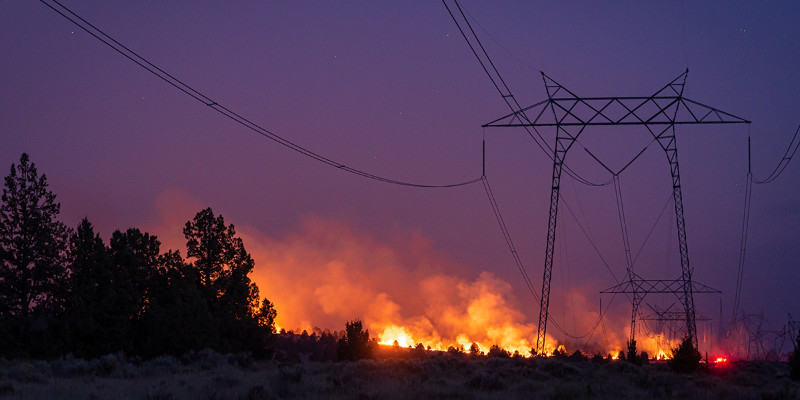Cooperatives Focus on Building Resilience Against Wildfire Impacts

Wildfires present a threat to electric utilities across the United States, destroying infrastructure and disrupting normal operations and economic activity. Beyond the physical damage, wildfires also pose a financial risk to creditworthiness and the ability of utilities to raise capital.
This dynamic is playing out most visibly in the western U.S., where investor-owned utilities (IOUs) face mounting challenges from wildfires. One of the consequences is the rising cost of insurance for wildfire liability. Commercial wildfire insurance rates rose by 30% over the last few years, with premiums doubling for some high-risk IOUs.
While other regions of the U.S. are not subject to the same scale and intensity of wildfires, the geographic threat is expanding. Electric cooperatives across the country are recognizing the need to prepare and respond proactively.
A key resource available to electric cooperatives is Federated Rural Electric Insurance Exchange, which provides insurance to electric cooperatives to cover various needs.
Federated Rural Electric Insurance Exchange Chief Operating Officer Corey Parr emphasized that wildfire mitigation must be tailored to each cooperative’s unique conditions. A key strategy is the development of a comprehensive Wildfire Mitigation Plan (WMP)—a structured approach that outlines practices and investments over time to reduce risk and improve response capabilities.
“In wildfire mitigation, localized planning is essential,” Parr explained. “It has to reflect the co-op’s system conditions, inspection routines and maintenance programs.”
In some states, utilities are required to develop WMPs under legislation or regulatory mandates. However, Parr stressed that mitigation should go beyond compliance—it should be viewed as a pathway to eliminating ignitions and enhancing system resilience.
“If we can mitigate the ignition, it is a win-win for cooperatives and the members served,” Parr said. He stresses that many cooperatives already have the “heavy lift” done through robust inspection, maintenance and vegetation management programs. The next step is documenting these efforts and refining plans to address emerging risks. It is also important to consider new tools such as weather monitoring systems and establishing communication protocols.
Parr urged cooperative leadership to be proactive: “The threat from wildfires isn’t going away. It is crucial for cooperatives to evaluate and implement processes designed to prevent ignitions. With the right tools, localized planning and leadership focus, cooperatives can effectively manage wildfire risks and safeguard their future.”
Wildfire mitigation is not just about securing insurance—it’s about protecting capital, maintaining operational continuity and ensuring the cooperative’s ability to serve its community. By investing in strategic planning and risk reduction, cooperatives can build resilience and remain a reliable force in the face of growing environmental challenges.